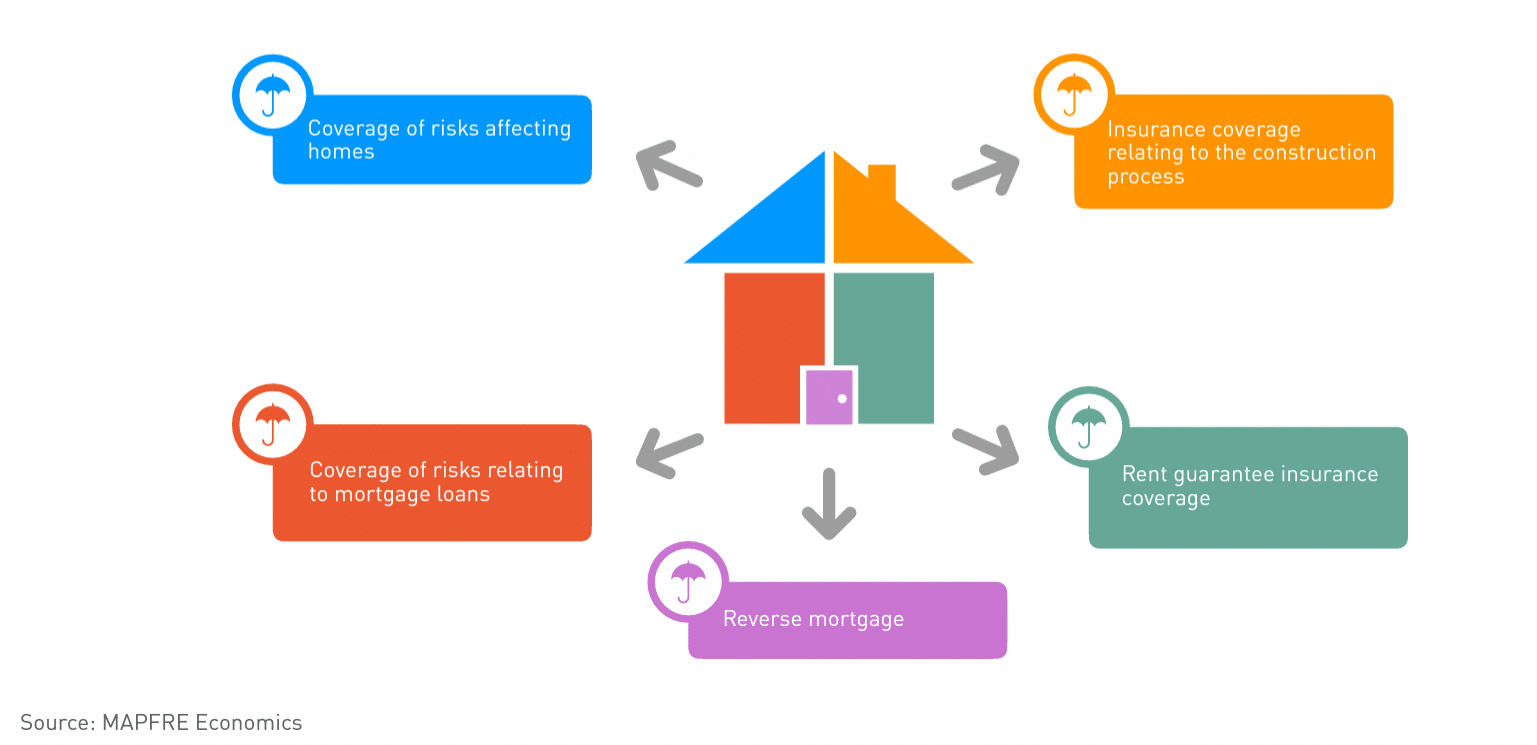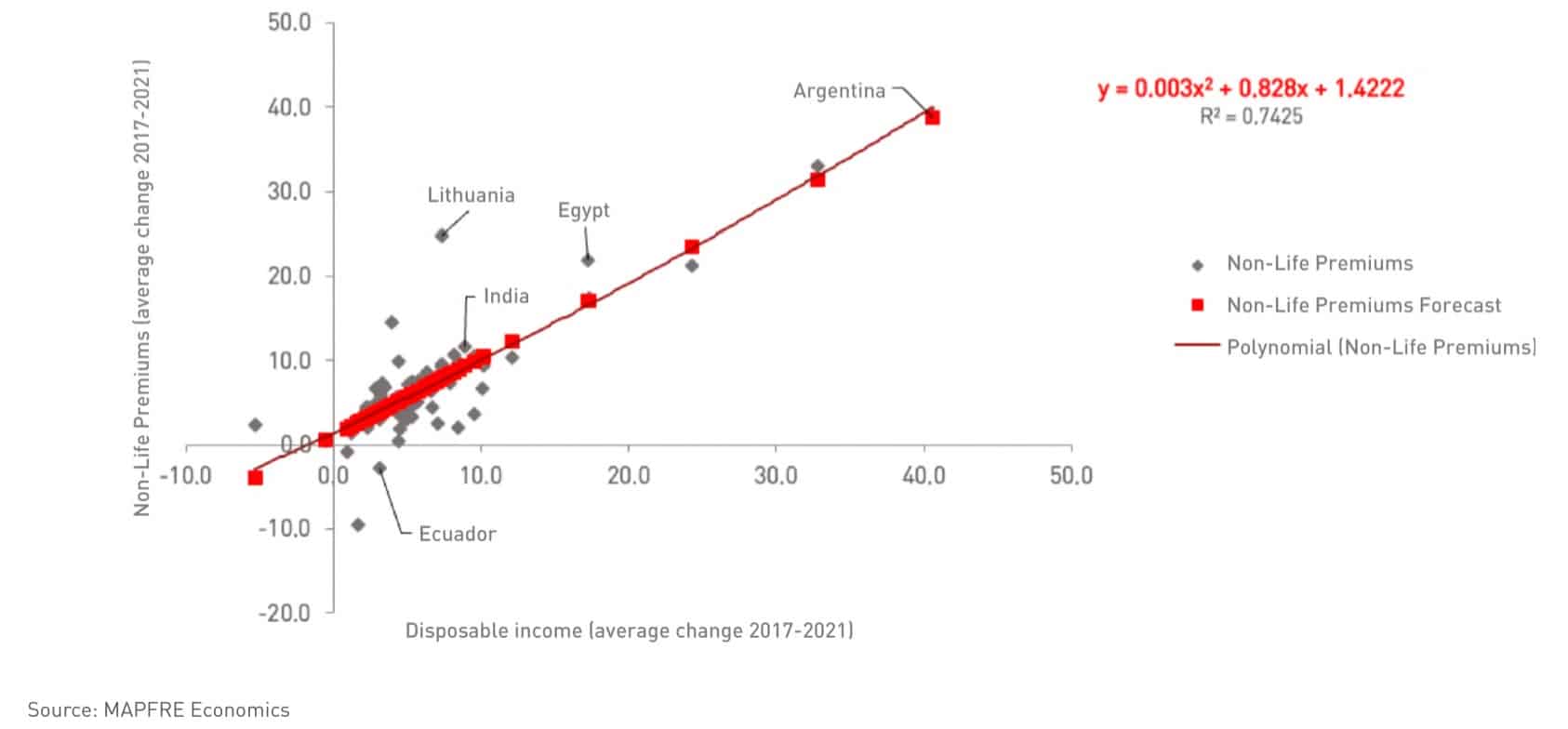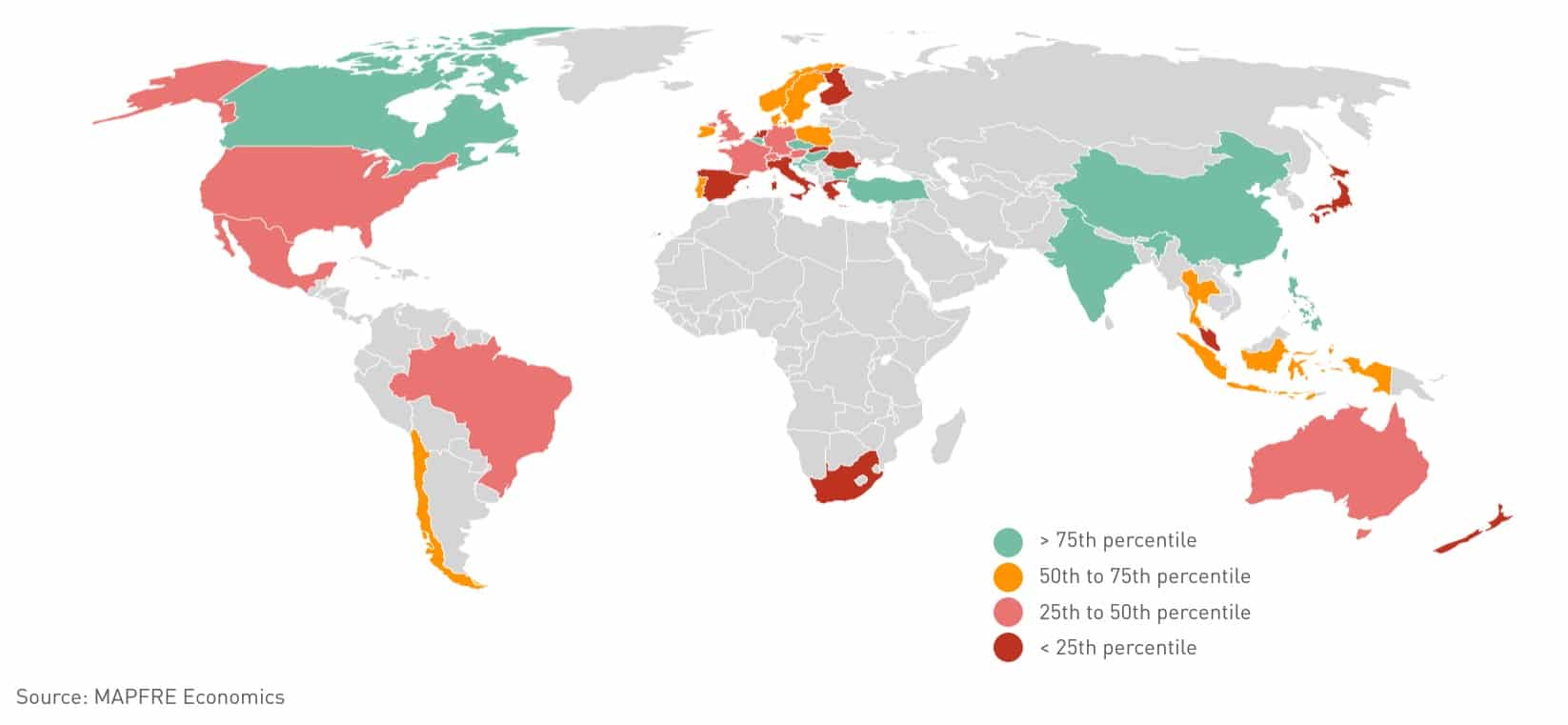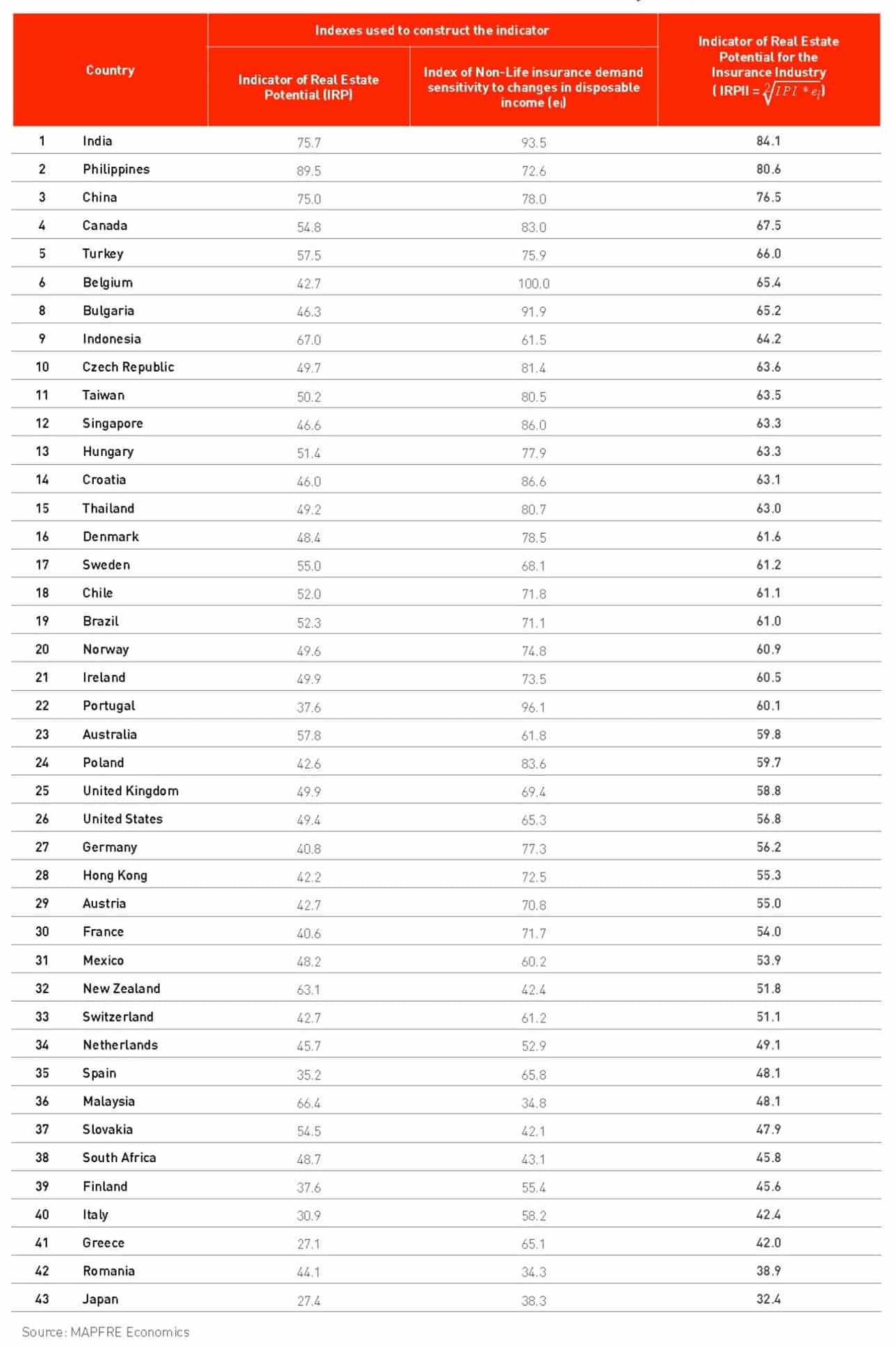Real estate markets and the insurance sector
Author: MAPFRE Economics
Summary of the report’s conclusions:
MAPFRE Economics
Real estate markets and the insurance sector
Madrid, Fundación MAPFRE, April 2023
Real estate markets are among the most relevant activities in a country’s economy and in the dynamics of the insurance sector, generating a wide variety of coverage needs. This is true both on the insurance demand side, with homeowners, businesses and other public and private institutions that own the properties or have a right to them, and on the supply side, with real estate developers, construction companies, financial entities and engineers, architects, real estate agents, appraisers and many other professionals. Insurance, meanwhile, plays a key role, helping to protect assets, facilitating the granting of mortgages and their mobilization on the financial markets, and promoting economic stability among homeowners and businesses, contributing to the well-being of society at large (see Chart 1).
Chart 1
Link between the residential real estate market and insurance activity

There are many indicators in developed countries related directly to the real estate market, while substantially less information is available on emerging markets. That leads to certain limitations regarding the pool of markets available for a comparative analysis of the base dynamics governing their real estate markets and their relationship with insurance activities.
Two especially significant indicators for the insurance sector are the housing stock and its growth (construction of new homes), which generate potential policies for the homeowner and HOA insurance, in addition to specific insurance related to the construction period and possible liabilities that may arise on completion of construction, related to its execution. Outstanding mortgage balances and newly granted mortgages are also significant indicators for insurance activity, as they are directly related to the insured capital in Life insurance covering the risk of death and disability of the mortgage debt holders.
In addition to housing stock and mortgages, demographics, gross capital formation for investment in housing, disposable personal income and others are also highly relevant indicators. The evolution of disposable personal income is essential, both for the development of the real estate market and for the insurance activity (see Chart 2).
Chart 2
Disposable income vs. Non-Life premiums: fitted regression curve

It is clear that there is a notably high correlation between the Non-Life insurance segment and disposable personal income, which translates into a high coefficient of determination. Risk Life insurance, which together with property & casualty insurance related to the home and the housing construction process, are the most relevant for real estate market coverage and follow a pattern similar to that of Non-Life insurance at the aggregate level, which we have used as a proxy to assess the correlation. Thus, in the explanation of the evolution of premiums in the Non-Life insurance segment in the 2017-2021 period, the variation in disposable personal income would explain 74.2% of the variation in premiums, while the rest would be attributable to other factors.
Given the relevance of real estate activity in economic performance, in general, and in the insurance sector, in particular, MAPFRE Economics proposes an indicator that aims to provide a relative measurement, initially, of the potential of real estate activity and, from there, of its relevance to the insurance sector for a group of 43 countries. Chart 3 shows the geography of this synthetic index known as the Indicator of Real Estate Potential for the Insurance Industry (IPIA).
Chart 3
Map of the indicator of Real Estate Potential for the Insurance Industry (IRPII)

Meanwhile, Table 1 includes the list, sorted from most to least potential, of the 43 countries for which it was possible to obtain the information necessary to create the indicator. The information shows that the highest level of potential, measured using the IPIA, is found in India, followed by the Philippines and China. China and Turkey, whose positive elasticity in the insurance business when faced with variations in disposable personal income improves their score, are also above the 75th percentile in the indicator’s, in fourth and fifth place, respectively. The rest of the markets above the 75th percentile in the IPIA distribution are Belgium, Bulgaria, Indonesia, Czech Republic, Taiwan and Singapore. Japan lies at the bottom of the ranking, below the 25th percentile, presenting indicators that are typical for a very mature market with a shrinking population. It showed weak scores in all the sub-indexes that influence the indicator. This distribution percentile is rounded out by Romania, Greece, Italy, Finland, South Africa, Slovakia, Malaysia, Spain, the Netherlands, and Switzerland.
Table 1
Indicator of Real Estate Potential for the Insurance Industry (IRPII)

In-depth analysis of some of the real estate markets considered to be representative shows that in emerging economies such as Brazil and Mexico, mortgages are not very developed (so they have great potential), with public promotion institutions that facilitate access to loans for workers with formal employment contracts. Other markets such as South Korea are characterized by the existence of a long-standing regulatory framework that has had a deep impact on residential real estate prices, maintaining growth even below the general inflation rate until two years ago. In the United States and the United Kingdom, having the most developed capital markets in the world has made a deep mark on the evolution of their real estate markets, as seen in the analysis of the historical price series, mortgages, new housing construction, number of transactions and other indicators.
The MAPFRE Economics report entitled Real estate markets and the insurance sector contains a specific revision for a series of reference markets, including the United States, Mexico, Brazil, the United Kingdom, Spain, Germany, Japan and South Korea. With regard to these markets, the indicators selected for in-depth analysis have been classified based on their relevance to insurance markets, including the housing stock and new construction, real estate transactions, outstanding mortgages and new mortgages, reverse mortgages, real estate investment instruments in the investment portfolios of insurance companies, housing prices and mortgage rates (mortgage securitization and covered bonds), the household credit gap, residential rentals, affordability and home purchase assistance programs, as well as the evolution of home-related insurance, Risk Life insurance, engineering insurance and other coverages associated with the residential construction process.
The complete analysis of the real estate markets and the insurance sector in the United States, Mexico, Brazil, the United Kingdom, Spain, Germany, Japan and South Korea is available in the report Real estate markets and the insurance sector, provided by MAPFRE Economics, which you can find at the following link:.




